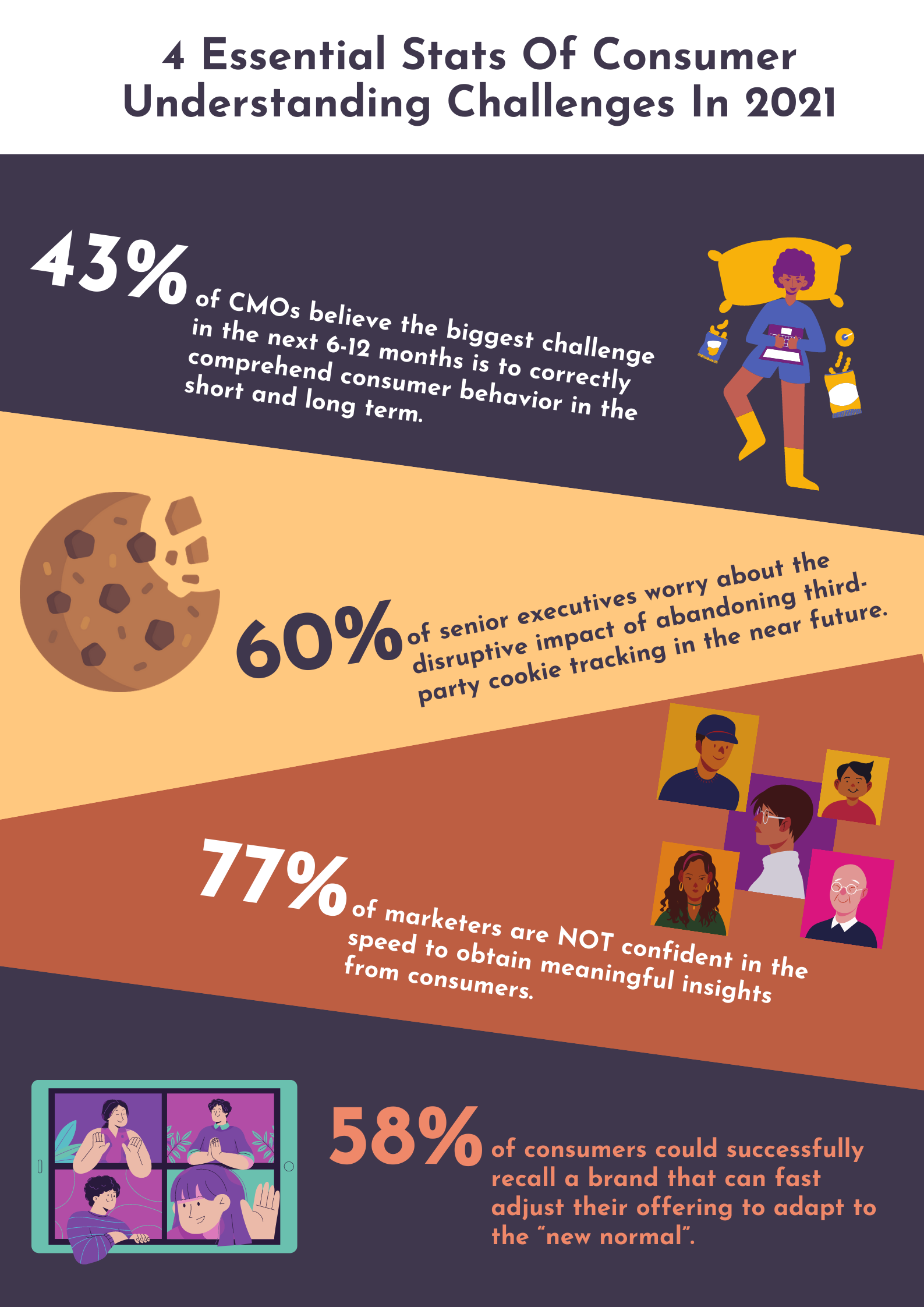The battle against COVID-19 is still raging on in many areas around the world. The fluctuated market witnessed consumer behavior transforming more rapidly than ever before. On one hand, brands are proactively preparing for a post-pandemic world. Consumers, on the other hand, expect brands to listen, understand and act on their data. 2021 is the start of a brand new marketing strategy era. Here are the major challenges facing marketers.

Understanding Consumer Behavior Became Trickier
The global health crisis triggered many unprecedented demand shifts, unexpected inventory shortages, misleading market news, etc. Not only the economy was rattled by the Coronavirus, but the political climate also evoked unsettling chaos. The turbulent social events last year influenced consumer behavior when fear and hope both played significant roles in consumer emotions. To clearly identify consumer trends amid the uncertainty is more challenging than ever. According to the Dentsu CMO survey 2020, the biggest challenge anticipated for marketing leaders in 2021 is to correctly comprehend consumer behavior in the short and long term. After a disruptive 2020, companies saw depressed customer loyalty and weakened brand trust.
Preparing For A Cookie-less World Requires More Actionable Data
As brands try to get ahead of the new consumer trends, collecting more informative data and improving data quality are the main focuses of marketing strategists. However, as major web browsers will move away from the use of cookies in the near future, tracking consumer behaviors will become more complicated. An Adobe and Econsultancy report indicates that 60% of the senior executives worry about the disruptive impact of abandoning third-party cookie tracking. As a result, marketers turn to zero-party and first-party data to achieve consumer understanding. In Merkle’s research, 74% of the marketing decision-makers increased the budget to accommodate the data privacy requirements. In a report from EY, more than half of the surveyed consumers said they became more conscious about their data privacy during the pandemic. With consumers rethinking data-sharing with brands, many are hesitant to give up their information.
Effective, Trust-worthy Communication Requires The Right Tools
Amidst the market turmoil, the explosion of fake news and misinformation led to a lack of trust amongst consumers. Based on research conducted by Genesys, 90% of the respondents worry about brands misusing their personal data. Because of this, many marketers shy away from communicating with consumers directly about data collection. The reality is that digital-savvy consumers make buying decisions based on whether they can trust the brands to handle their information with caution, security, and ethics.
Additionally, finding the right platform to gather consumer opinions can be difficult. In Segmanta’s own study, 64% of respondents said they prefer using online surveys to provide feedback. Many market research platforms still lack the ability to engage consumers with conversational, fun survey flows, to easily analyze survey results, or to generate actionable insights. This is one of the main reasons why only a fraction of marketers are confident in the speed to obtain meaningful understanding from consumers.
Establishing Agile Marketing Strategies To Advance In Consumer Understanding
According to Deloitte’s report on 2021 global market trends, 58% of the surveyed consumers could successfully recall a brand that can fast adjust their offering to adapt to the “new normal”. 82% of the respondents claimed that they are more willing to choose these brands. Agility has grown into a powerful advantage that enables companies to maintain and continuously improve their competitiveness in an unpredictable and constantly changing market environment. The main challenge of detecting consumer trends and utilizing agile marketing lies in effective consumer data collection, active audience listening, and flexible strategy adjustment in response to the ever-changing consumer expectations.

